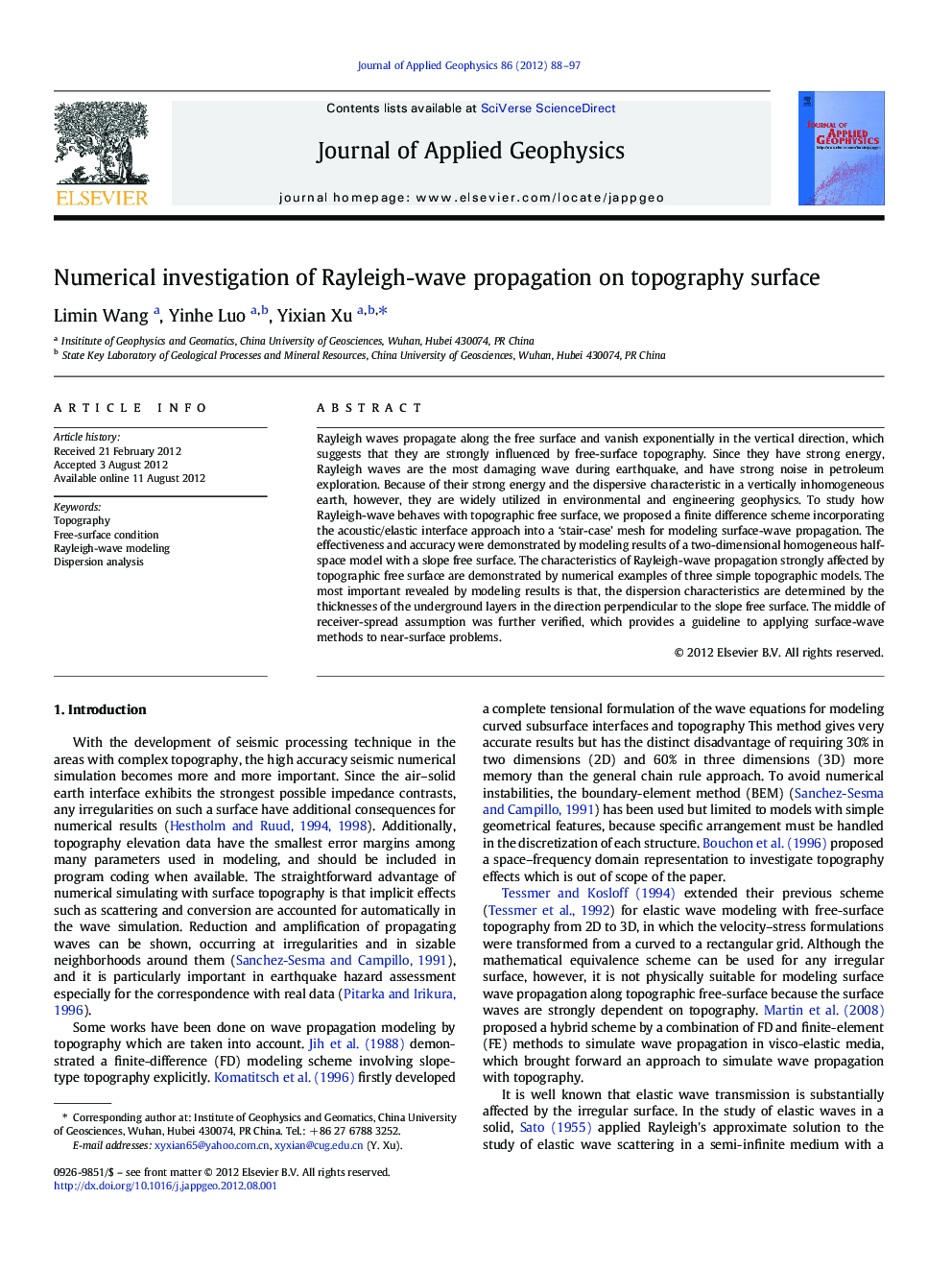| Article ID | Journal | Published Year | Pages | File Type |
|---|---|---|---|---|
| 4740570 | Journal of Applied Geophysics | 2012 | 10 Pages |
Rayleigh waves propagate along the free surface and vanish exponentially in the vertical direction, which suggests that they are strongly influenced by free-surface topography. Since they have strong energy, Rayleigh waves are the most damaging wave during earthquake, and have strong noise in petroleum exploration. Because of their strong energy and the dispersive characteristic in a vertically inhomogeneous earth, however, they are widely utilized in environmental and engineering geophysics. To study how Rayleigh-wave behaves with topographic free surface, we proposed a finite difference scheme incorporating the acoustic/elastic interface approach into a ‘stair-case’ mesh for modeling surface-wave propagation. The effectiveness and accuracy were demonstrated by modeling results of a two-dimensional homogeneous half-space model with a slope free surface. The characteristics of Rayleigh-wave propagation strongly affected by topographic free surface are demonstrated by numerical examples of three simple topographic models. The most important revealed by modeling results is that, the dispersion characteristics are determined by the thicknesses of the underground layers in the direction perpendicular to the slope free surface. The middle of receiver-spread assumption was further verified, which provides a guideline to applying surface-wave methods to near-surface problems.
► We proposed a feasible scheme for modeling surface wave on topographical surface. ► 2D slope-half-space model proved the accuracy and effectiveness of our scheme. ► Three numerical examples show the influence of topographical surface. ► Dispersion characteristics are determined by the real thickness of layers. ► The middle of receiver-spread assumption is further proved again.
